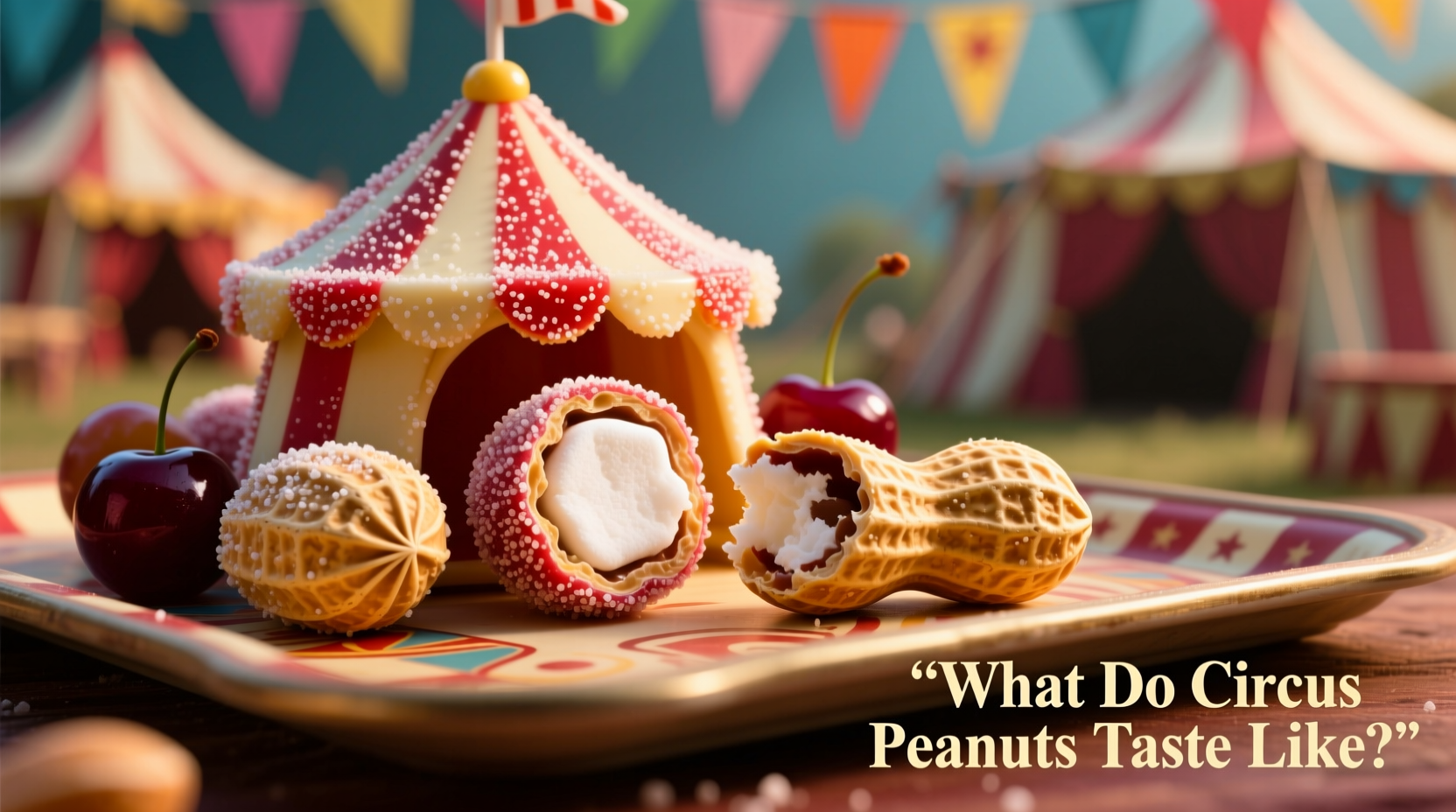What Circus Peanuts Actually Are (And Aren't)
Despite the misleading name, circus peanuts contain zero peanut ingredients. These oblong, orange candies are technically a type of peanut-shaped marshmallow made primarily from sugar, corn syrup, and banana flavoring. The "peanut" in their name refers only to their shape, not their ingredients or flavor profile.
Breaking Down the Flavor Profile
When you bite into a circus peanut, you'll experience three distinct sensory elements:
| Sensory Element | Description | Common Comparisons |
|---|---|---|
| Primary Flavor | Artificial banana (isoamyl acetate compound) | Similar to banana Runts or certain vintage banana candies |
| Texture | Light, airy marshmallow with slight resistance | Less dense than standard marshmallows, more firm than Peeps |
| Aftertaste | Waxy finish with lingering banana notes | Distinct from modern banana candies which use different flavor compounds |
Why They Taste Like Banana (The Science Behind the Flavor)
The distinctive banana flavor comes from isoamyl acetate, an ester compound that creates that classic artificial banana taste. This same compound was commonly used in early 20th century banana candies before the Gros Michel banana variety (which naturally contained similar compounds) was largely replaced by the Cavendish banana in the 1960s.
According to food science research from the USDA Agricultural Research Service, isoamyl acetate produces a flavor profile that modern consumers often describe as "vintage" or "candy banana" rather than resembling fresh bananas today.

How Circus Peanuts Compare to Similar Candies
Many people confuse circus peanuts with other peanut-shaped or marshmallow candies. Here's how they differ:
- vs. Actual Peanuts: Zero nut content — completely different flavor and texture
- vs. Marshmallows: Firmer texture, banana flavor instead of vanilla, more dense
- vs. Peeps: Less sugary, more defined shape, banana rather than fruit flavors
- vs. Other Banana Candies: Distinct waxy finish not found in modern banana candies
The Historical Context: Why Banana Flavor?
Circus peanuts emerged in the early 1900s when banana flavoring using isoamyl acetate was extremely popular in confectionery. During this period, the Gros Michel banana—which naturally contained compounds similar to isoamyl acetate—was the dominant banana variety in America. When this banana was largely replaced by the Cavendish variety after the 1960s, the artificial banana flavor in candies like circus peanuts began to taste increasingly different from fresh bananas.
As documented by the Food Industry Association, circus peanuts became particularly popular as inexpensive carnival and circus treats, hence their name. Their distinctive flavor remained consistent even as fresh banana flavors changed, creating that "vintage" taste experience modern consumers recognize.
When You Might Encounter Circus Peanuts
While not as ubiquitous as they once were, circus peanuts still appear in:
- Traditional candy stores selling retro candies
- Some bulk candy sections of grocery stores
- Carnival and fair food vendors (honoring their historical connection)
- Seasonal candy mixes, particularly around Halloween
- Craft projects where their shape and texture are utilized











 浙公网安备
33010002000092号
浙公网安备
33010002000092号 浙B2-20120091-4
浙B2-20120091-4